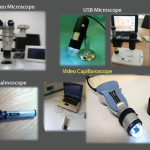There is no costovertebral angle tenderness on percussion. The patient’s skin has no rashes. She demonstrates mild cyanosis in distal digits of the right index and fourth fingers and the left index finger. There is a shallow ulcer on distal fingertip of the left index finger.
Musculoskeletal exam: The patient’s gait is normal, and she exhibit good muscle strength in her upper and lower extremities, both proximally and distally. All joints are unremarkable with free range of motion and no evidence of synovitis.
Diagnoses:
- Raynaud’s phenomenon
- Rule out other autoimmune connective tissue disease
Plan: The patient is counseled regarding the etiology, pathophysiology, symptoms, and prognosis for Raynaud’s phenomenon. The physician reviews measures to minimize Raynaud’s phenomenon and provides the patient with written information on Raynaud’s phenomenon. Laboratory studies are ordered to evaluate her for lupus or other autoimmune connective tissue disease. The patient is started on nifedipine extended release. The physician reviews actions and side effects of nifedipine with the patient. He then documents his findings in a written report and sends it to the primary care doctor.
How would you code this?

